A good hedge is an invaluable addition to any garden. From the outside, it delineates and disguises boundaries, creating structure in a space. Up close (and there’s no better way to get a close-up view than by learning the ancient art of hedge laying) it reveals shady spots on the ground and well concealed areas for shelter and nest sites as well as the foliage, blossom, nuts, berries and fruits sought out by invertebrates, small mammals and birds.
Hedges are excellent wildlife habitats whilst also adding colour and interest to the garden – far more so than a simple wall or fence. With the added benefit of providing food such as cherry plums, hazelnuts, hawthorn berries or crab apples, there are just so many reasons to plant a wildlife hedge in your garden…
The History and Importance of Hedges
Many hedgerows were planted to enclose the common fields in the eighteenth and nineteenth centuries. Although enclosure removed the commoners’ rights of the rural poor, the creation of thousands of miles of hedgerow created important wildlife corridors.
Tragically, in the last 50 years more than half our hedgerows have been uprooted and destroyed. Without these important habitats – often the only wildlife-friendly spaces in a sea of agricultural land – our native flora and fauna is in trouble.
And this is where gardeners can really make a difference. By planting more hedges in our million acres of gardens in the UK, we can provide vital connected habitats for struggling wildlife.
Trees & Shrubs
Native trees and shrubs are ideal for creating the main hedge structure. The word ‘hedge’ originates from the Old English haga, referring to the haw or hawthorn (Crataegus monogyna), the oldest of the hedgerow trees. Hawthorn provides food for more than 150 insect species, creamy-white May blossom for the pollinators, autumn haws beloved by birds and shelter for all manner of amphibians, mammals, birds and butterflies. It is a tolerant plant, growing well in a range of soils and situations including coastal gardens and urban sites where pollution is an issue.
Ideally, hawthorn should be the cornerstone of any wildlife hedge, with a mix of other suitable trees and shrubs. There are lots to choose from, including spindle (Euonymus europaea), beech (Fagus sylvatica), hazel (Corylus avellana), blackthorn (Prunus spinosa), field maple (Acer campestre), hornbeam (Carpinus betulus), wayfaring tree (Viburnum lantana), rowan (Sorbus aucuparia), crab apple (Malus sylvestris), wild privet (Ligustrum vulgare), elder (Sambucus nigra), wild pear (Pyrus communis), guelder rose (Viburnum opulus), cherry plum (Prunus cerasifera) and holly (Ilex aquifolium).
Climbers
In the wild, hedges are often festooned with climbers twining through the branches, providing more food and shelter for wildlife. One of my favourite climbers in our local hedgerows is old man’s beard (Clematis vitalba). It loves our alkaline chalk soils but is too invasive to plant in the garden. Instead try honeysuckle (Lonicera periclymenum), which is a key plant for several species of butterfly including the rare white admiral and is also much favoured by bumblebees and moths.
Evergreen winter clematis also grows well through hedges. We grow Clematis cirrhosa ‘Jingle Bells’ and ‘Freckles’ which have created a deep tangle of stems, covered at the moment with a profusion of beautiful bells that conceal a robin nest box and an old blackbird’s nest. Ivy is another good choice and has the advantage of flowers from September to November for late pollinators. Although it has had a bad reputation in the past, ivy doesn’t damage trees or sound masonry and supports around 50 species of wildlife.
Ground Cover
The soil at the foot of a hedge provides more space to add wildlife-friendly planting. Shade-loving wild flowers such as garlic mustard (Alliaria periolata), lily-of-the-valley (Convallaria majalis), hedge woundwort (Stachys sylvatica) and hedge bedstraw (gallium mollugo) thrive in the sheltered conditions, providing foliage and flowers for invertebrates such as orange-tip butterflies and bees.
One of the best things about planting a wildlife hedge is the diversity of species it attracts. You may be lucky enough to see a common toad or hedgehog (provided you have created access into your garden) sheltering at the base of the hedge, a copper underwing moth on the crab apple or even, as I saw last week, three male bullfinches resplendent in the winter sunshine, feeding on the emerging blackthorn buds.
Robin feeding on cotoneaster
Keep calm and carry on gardening
Nic Wilson, Writer and Garden Designer

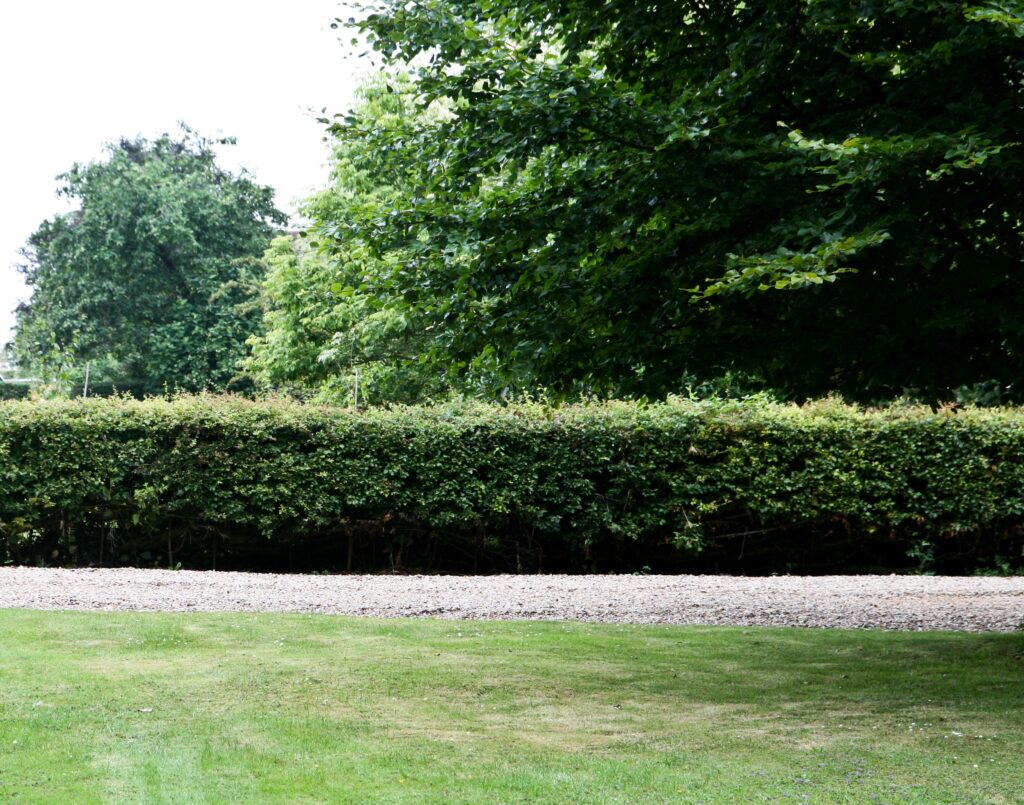
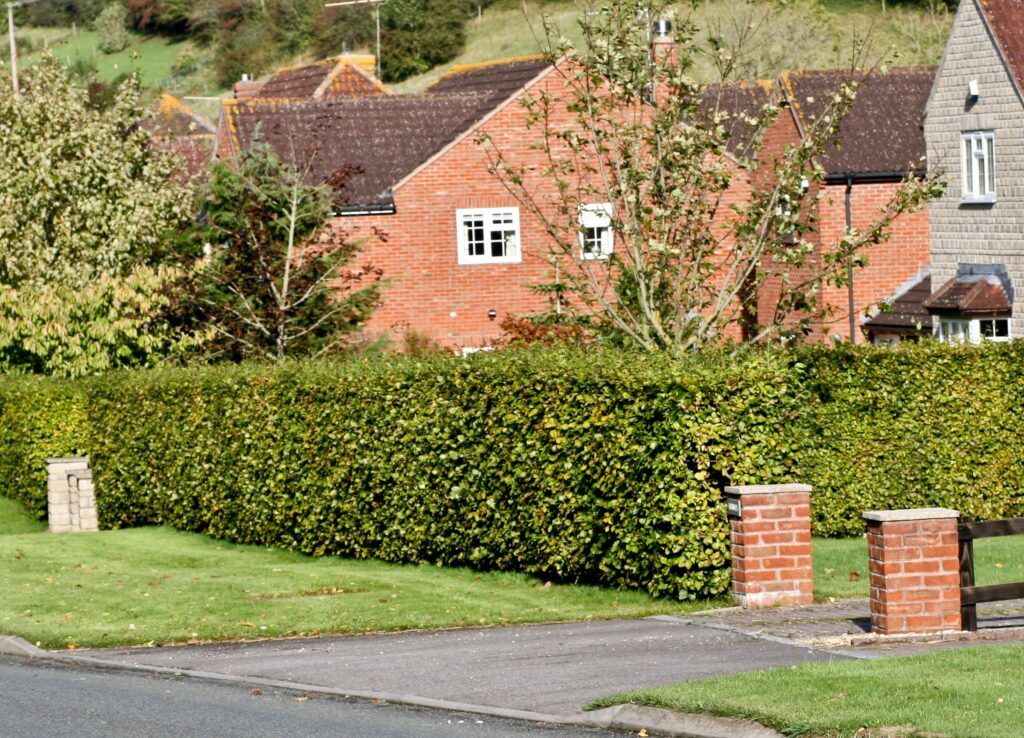
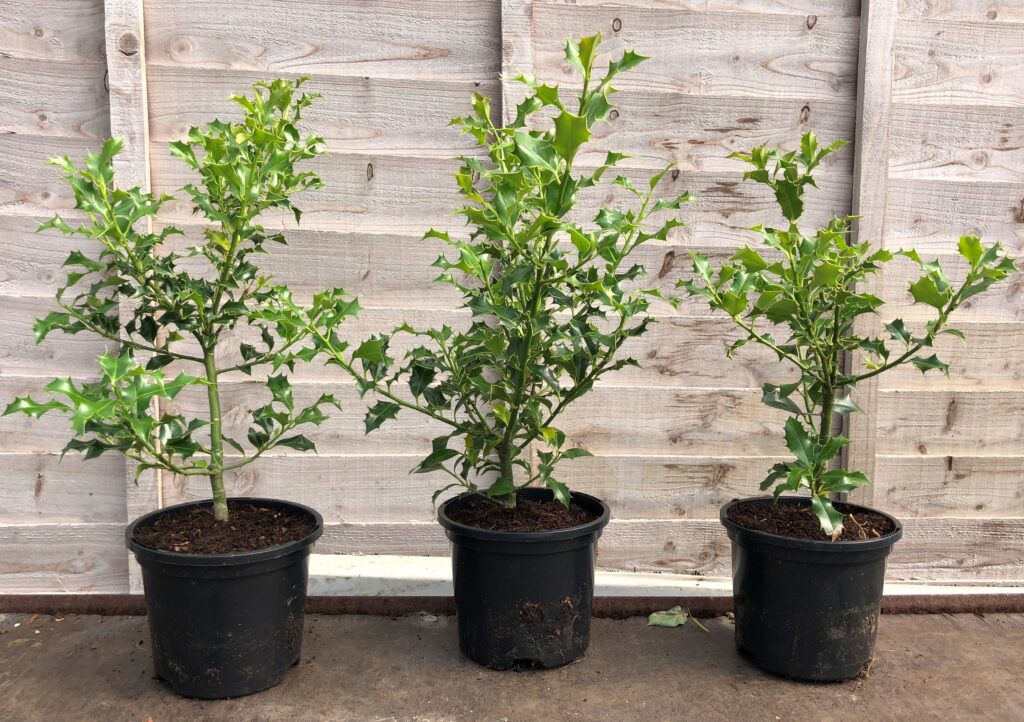
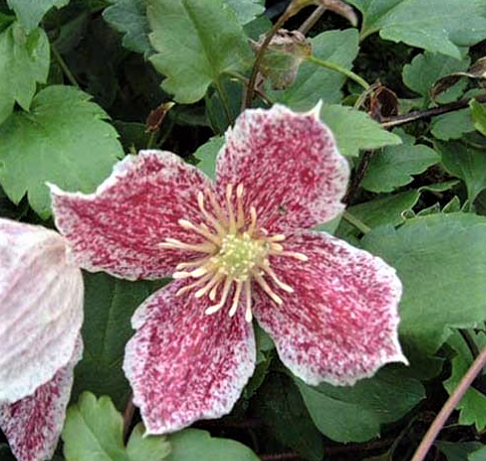
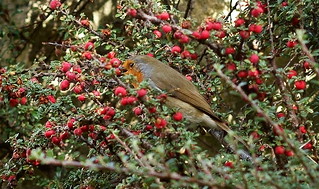
I enjoyed reading this article and will buy some of these plants for a hedge that I wish to create at the edge of my property including honeysuckles and clematis.
Good article on wildlife hedging. Is Honeysuckle OK in an acidic clay/sand/ silt soul (Greensand Head in Charmouth)
Should be – it will grow pretty much anywhere.